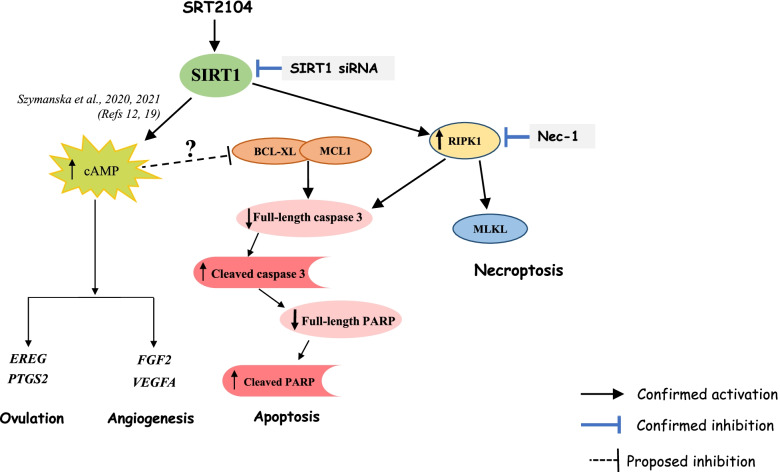Fig. 10.
Illustrative summary depicting diverse actions of SIRT1 in human granulosa cells. SIRT1, activated by SRT2104 was previously shown to elevate cAMP levels [12]. SIRT1 induced genes pivotal for ovulation (EREG and PTGS2) and angiogenesis (FGF2 and VEGFA), most likely in a cAMP-dependent manner. SIRT1 activation and subsequent elevation of cAMP may also promote reduction of anti-apoptotic proteins BCL-XL and MCL1. This triggers the cleavage and activation of caspase 3. Cleaved caspase 3 then cleaves PARP leading consequently to apoptosis. One may therefore suggest, SIRT1-induced cAMP is responsible for the coexistence of luteinization and apoptosis in luteinizing GCs. SIRT1 also activates RIPK1 and MLKL proteins thereby advancing necroptosis. Additionally, activation of RIPK1 can also mediate apoptosis by activating caspase 3. The role of RIPK1 in SIRT1 induced apoptosis and necroptosis is affirmed by the attenuation of apoptotic and necroptotic proteins by Nec-1. Pattern of FACS sorted cells further support the role of SIRT1 as inducer of apoptosis and necroptosis. Ablation of endogenous SIRT1 with siRNA produced opposing actions thereby corroborating the effects observed with SIRT1 activation

